Among the best
By Štefan Ščecina, AGROMAGAZÍN
The south-east of Slovakia once was one of the country’s strongholds of the agriculture industry. However, the societal upheaval of 1989 also resulted in the collapse of numerous farms and companies in this sector. Despite the unbalanced playing field some farmers managed to be successful in the market and even in a national comparison.
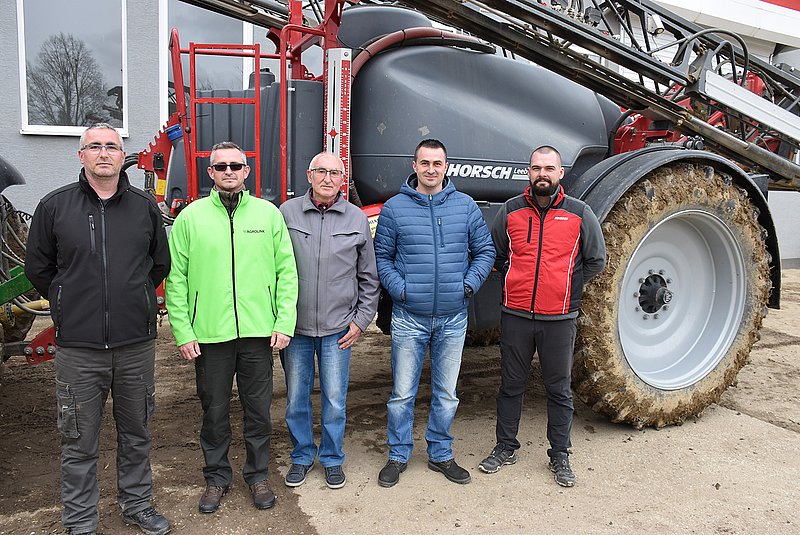
Regular awards
At that time local farmers were forced to ship their products to processors hundreds of kilometres away. The result was reflected in purchase prices which were sometimes up to 20 € per ton lower than, for example, in western Slovakia. Of course, when looking at production costs, fertiliser prices, chemicals, diesel fuel and the like, it is now “fairly” balanced.
The results of the work of the Szaxon family are regularly recognised by awards in national competitions. For example, in 2019 they for the first time won the Top Agro competition by a clear margin. This competition assesses agricultural companies on an annual basis based on their economic indicators. In previous years, the Szaxon family had already ranked in top positions. František Szaxon, the patriarch of the family, was recently nominated for the TOP agricultural manager of the year in Slovakia. The awards ceremony for this competition was delayed by the coronavirus pandemic, so the results are likely to be announced in September.
Family means a lot to the Szaxons. František Szaxon always makes sure to point out that all the success they have achieved are the result of working together with his wife Terézia, their sons František, Peter, Tomáš and daughter Annabella, as well as their own families.
František Szaxon has worked in agriculture his entire life. He started at the local cooperative farm in Zatín, where he worked until the farm went bankrupt. He spent his days working at the farm, but in the afternoon and his free time during the season he focused on raising fast-growing vegetables on 42 hectares of land. He sold the products at the markets in the northern regions of Slovakia. Already at that time his children were a tremendous help, working in plastic greenhouses behind the house at a time when their peers were having fun somewhere by the water or in the sports ground.
The own farm
The Szaxon’s began to establish their family farm in 2002, shortly after the collapse of the local co-operative. The farm gradually expanded to its current 2,300 hectares of agricultural land, 480 hectares of which are classified as permanent grassland, including nearly 300 hectares of natural habitats in the Latorica Protected Landscape Area.
These meadows, which are officially classified as an ecological area, provide the fodder for their 220 Limousin beef cattle. Last year, getting that fodder was not a simple process at all. In May, they managed to mow and bale 120 hectares of hay in the area between the levies, but the Latorica river overflowed overnight, and all the degraded hay remained in the water for almost a month. If the Latorica reaches a flood state, the water level is very slow to return to a normal level.
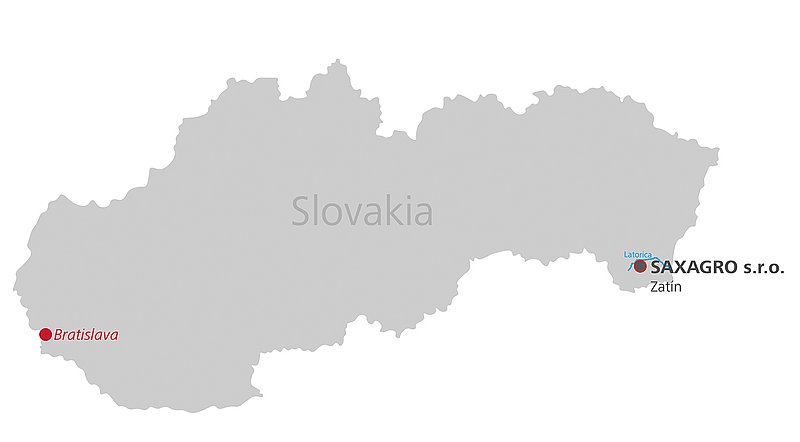
Deep soil loosening is typically used on arable land to improve the water management. Unfortunately, this did not help completely last autumn when the heavy soils were unable to absorb the extreme amounts of precipitation and waterlogged areas appeared in multiple fields. At least the local children enjoyed themselves as they discovered they could skate on them during the winter. As a basic principle, this area is easier to farm in drier years, as the heavy soils are better able to hold soil moisture. Of course, this does not apply to very dry years.
Crop rotation with 6 crops
Last year, the harvest in Zatín was one of the most difficult in recent years because of the frequent rainfall and the unstable weather that lasted nearly a month from 8th of July to 3rd of August. The Szaxons normally manage to harvest their crops within two weeks using two of their own Claas Lexion harvesters and another three subcontracted harvesters. Harvest yields were pleasing, especially for the most cultivated crop, winter wheat, for which they recorded an average yield of 6.15 t/ha from an area of 682 hectares, while better fields achieved yields of 8 t/ha. Many farmers had quality problems last year, but that did not apply to the local wheat production. Overall, the crop met elite agricultural parameters, with NL values of 14 to 15% and an average of 33% gluten.
Spring barley which was damaged by heavy rains and a windstorm turned out to be less successful. Subsequently, this crop did not meet the prescribed malting parameters and was used as feed barley. A total of 650 tonnes was affected. The farm is able to store up to 5,000 tonnes of commodities in 3 hangar-type storage buildings.
For rape, they achieved a much better result. The average yield amounted to 4.17 t/ha on 206 hectares. If the two less-productive fields, where there had been a problem with the plant development right from the beginning, were not included, the average yield would have been 4.5 t/ha. And the result of the best 50 hectares? A more than respectable 4.8 t/ha. The Szaxons know that it is important to include rape in their crop rotation. They certainly are not planning to cut back on these crops and even want to increase their current cultivation are to more than 300 hectares. Mr Szaxon mentions another important benefit: “We had a contract for 650 tonnes with a specific company that is very reliable with regard to financing the purchased commodities. Once the rape was picked up and invoiced, we had the funds on our account within 14 days. There are, of course, examples where we have to wait much longer for the money.”
Weather fluctuations
In June 2019, a strong hailstorm swept across the area around Zatín damaging maize, wheat, barley, sunflower and soybeans significantly. Maize was the most affected crop and suffered the most significant reductions in yield. However, on the undamaged and best plots the grain maize yield amounted to 14.5 t/ha. Last year, too, they also recorded a decent maize yield. This is why, this year, they increased the cultivation area from 280 ha to more than 400 ha.
Soybeans are another crop that thrives in the vicinity of Zatín, and they are grown on more than 150 ha. The cultivation of sunflowers has been decreasing recently. One of the main reasons is the soybean cultivation where sunflowers can remain as a weed for years while chemical agents simply are not up to dealing with this problem. The ragweed, which is extremely difficult to eradicate, is also a significant problem. And it does not seem that chemical plant protection will become easier in the near future. Complications are caused by restrictions of active substances, especially in the sector of systemic pesticides.
Because of the unfavourable weather in autumn less wheat was sown. The plan was to sow around 700 hectares, but the Szaxon family ended up with 200 hectares less. In recent years, the herbicidal treatment of cereals in autumn has proved to be successful, and the plants started better in the spring - without competition from weeds. Last year, this was simply impossible as the weather was so adverse.
Success factor quality
The Szaxon family is very satisfied with machinery – especially with regard to quality and performance. Weather fluctuations and a time window for an optimum cultivation that is getting shorter and shorter force them to lay more stress on individual sectors. This was the reason for purchasing a new HORSCH Leeb sprayer with a tractor and a Claas Lexion harvester last year.
Shallow stubble cultivation is carried out as soon as possible after the harvest. Until recently, the Szaxons mainly used a disc tool with "X" formation. But the discs of this machine of an unnamed brand wore unevenly and the machine left an uneven field. A hill formed in the middle, with grooves on the sides. Three years ago, they decided to purchase a HORSCH Joker 6 HD with a working width of 6 metres. František Szaxon Jr., an agronomist and the equipment specialist of the farm, is more than happy: “Working with the Joker is incomparably better. We use it to prepare the soil prior to sowing, especially for the crops that are sown in autumn.”
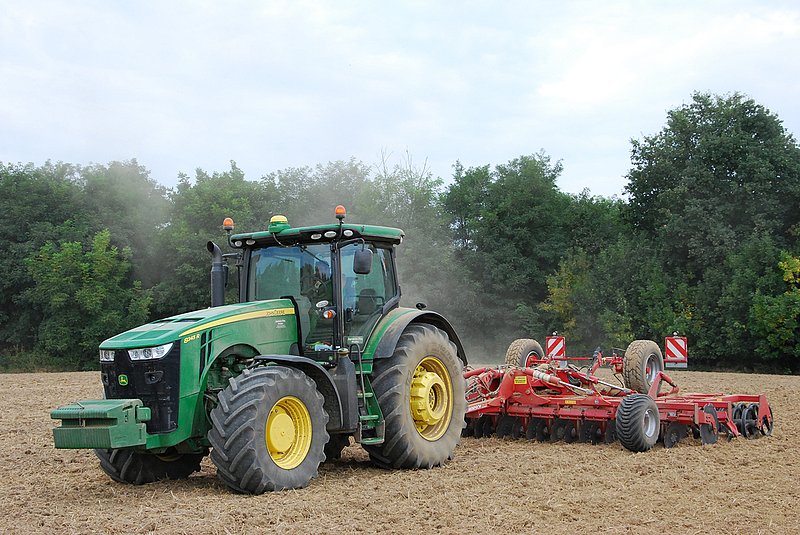
HORSCH machines also fit well into the tillage system of the farm where ploughing still plays an important role. Approximately 50 % of the area is ploughed annually and the Joker is used, for example, to level the rough furrows before sowing rape.
One of the most widely used machines on the Szaxon farm is the cultivator Terrano 5 FX. It is used for preparing the field, typically at a working depth of 20 cm, prior to sowing their most cultivated crop - wheat (almost 700 ha). The Terrano also did an excellent job during last year's extremely humid autumn. It was practically impossible to work with several other machines as the working elements clogged quickly. The HORSCH Terrano has a SteelDisc packer in the rear, equipped with scrapers, which guarantees an excellent performance even in wet and adhesive soils. Based on their experience the Szaxons would welcome the same packer in the Joker which is equipped with a double RollPack packer. However, this packer works very well if it is not extremely wet.
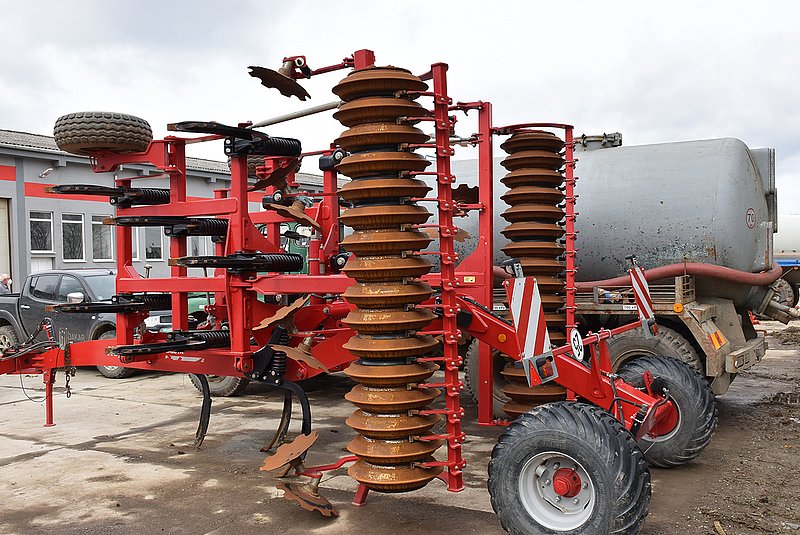
Solid boom
Most farmers no longer use sprayers just to spray chemicals; they also use them to apply foliar nutrients. This is mainly due to the dry periods which in recent year almost have become typical for the spring season. Once spread, solid fertilisers have to wait for rain, and if the waiting time is too long, the plants do not receive the nutrients at the right time and a certain amount of the fertiliser evaporates into the air. The Szaxons try to give the crops everything they need and to a greater extent have come to rely on foliar nutrients.
Given the need to treat and fertilise large areas, they purchased another trailed sprayer in addition to their self-propelled sprayer. Ing. Peter Szaxon comments on their decision: “Before purchasing, we visited the production plant in Germany. We saw first-hand the professionalism of their work - from the development to the assembly of the machine.” This is another reason why they bought a new HORSCH Leeb 4 AX with a boom width of 24 metres before the last season started. “If I had to choose just one advantage of this sprayer, it would definitely be the boom control system. Most recently we sprayed wheat that had been sown in late autumn into a soil that because of excessive rainfall had not been prepared optimally. Therefore, the surface was quite bumpy, but the boom remained unbelievably stable at the defined height, almost as if the sprayer was moving over a flat surface,” Ing. Peter Szaxon adds.
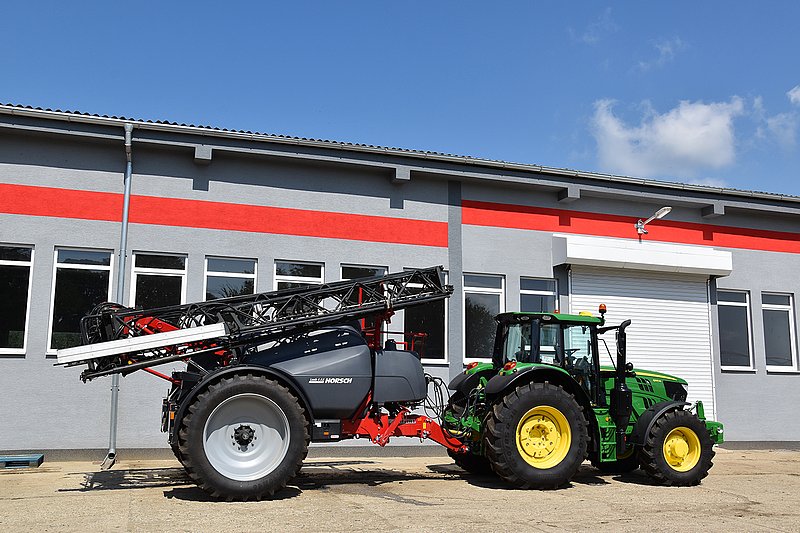
The sprayer is equipped with a 3800 l tank and an additional tank with a capacity of 200 l in case the spray liquid foams up. At the moment, the farm uses the whole 4000 l without any problems.
And what might be the next addition to the Szaxon family’s machinery made by HORSCH? Maybe a Maestro single grain seed drill which they tested this spring.